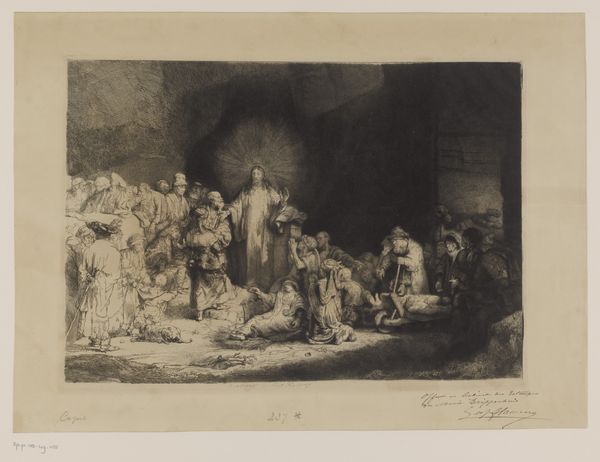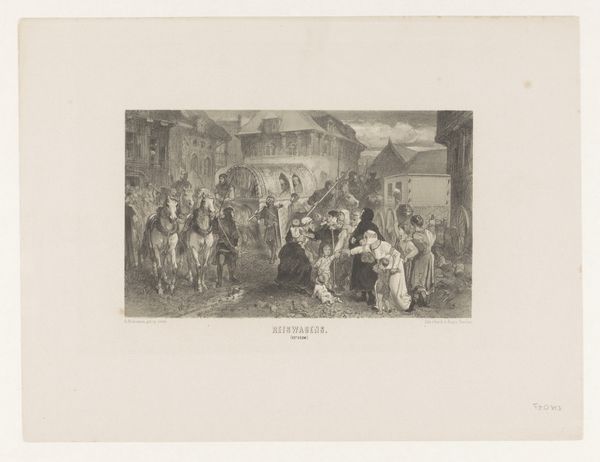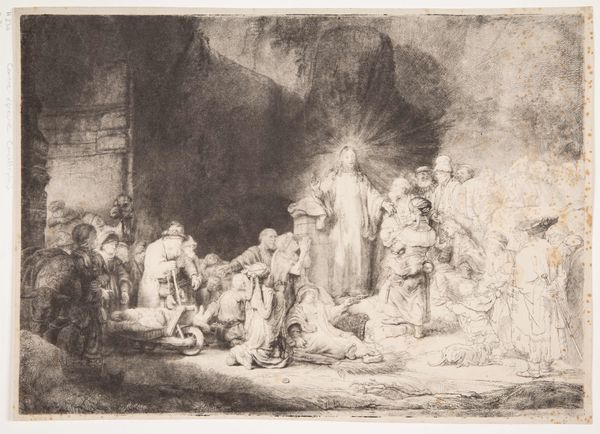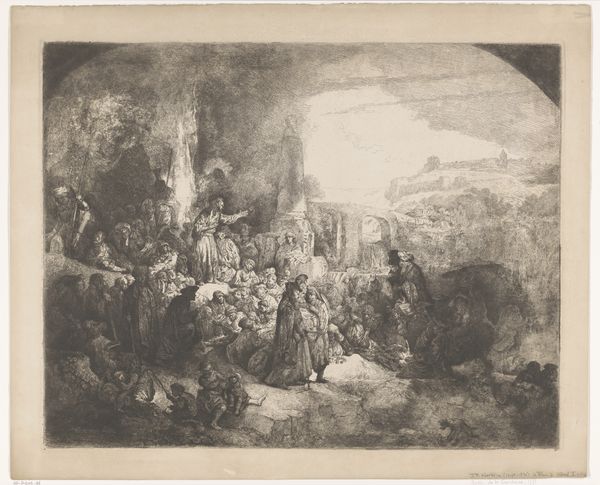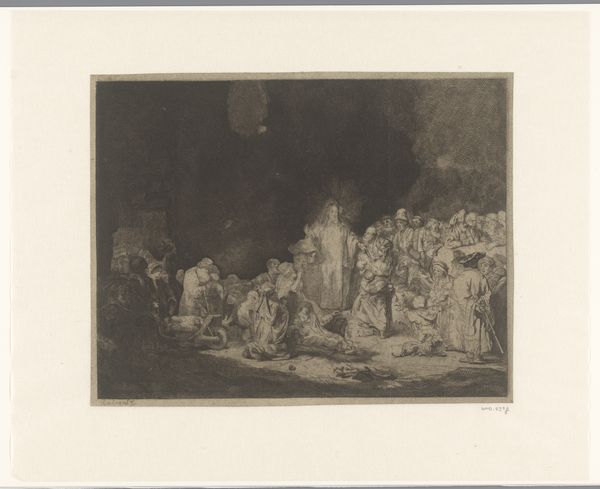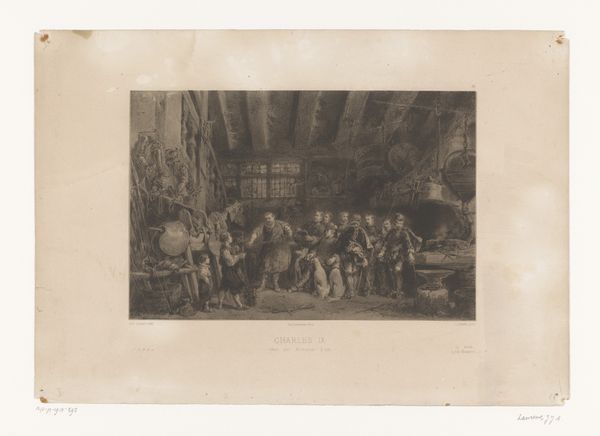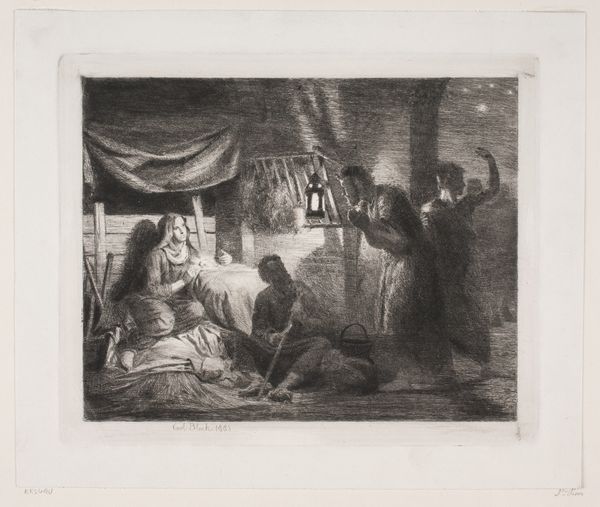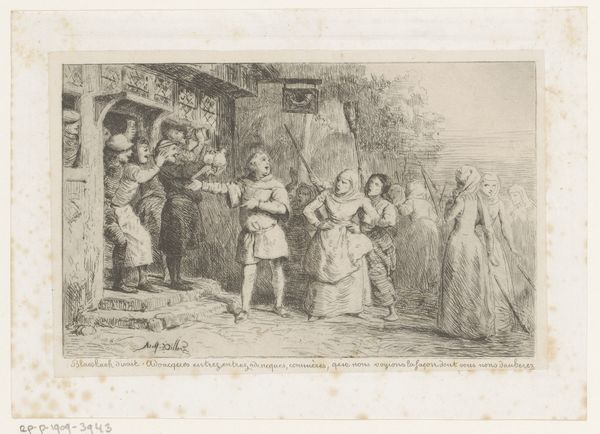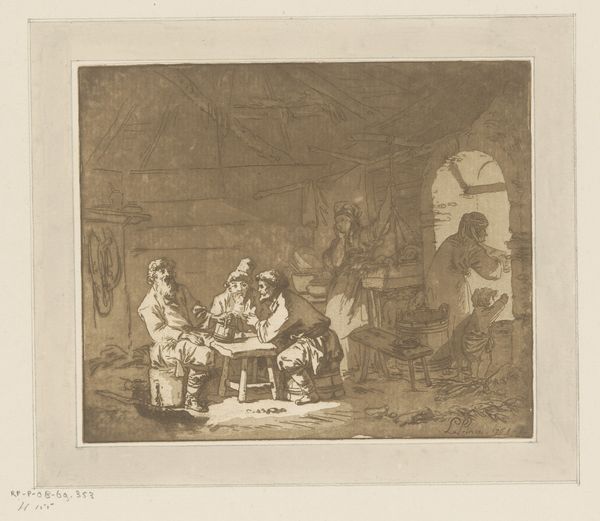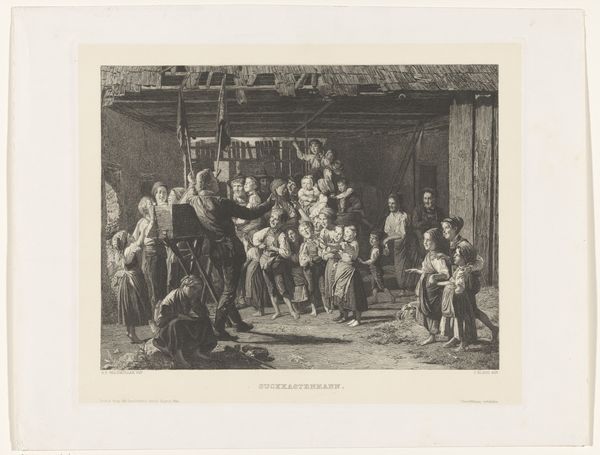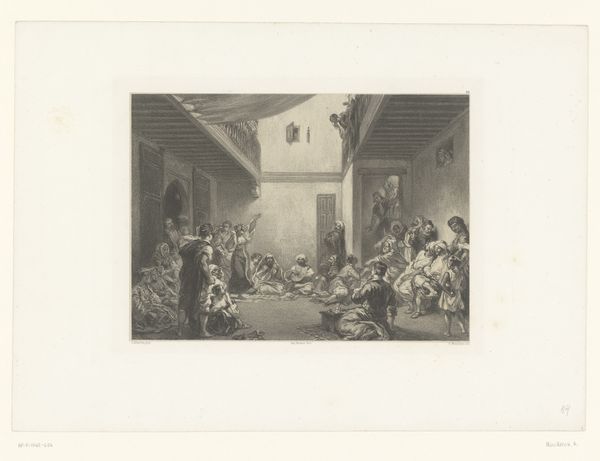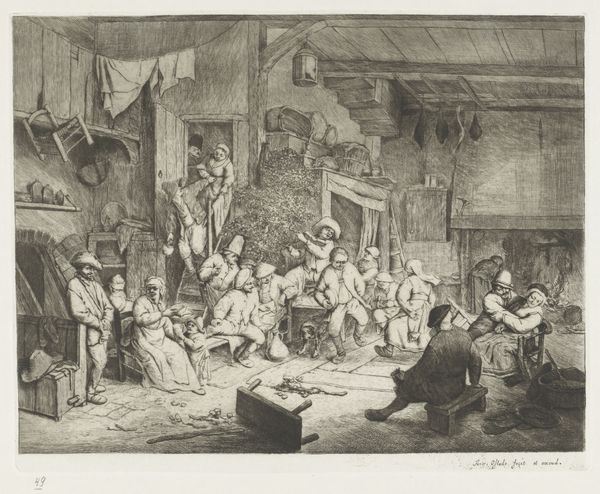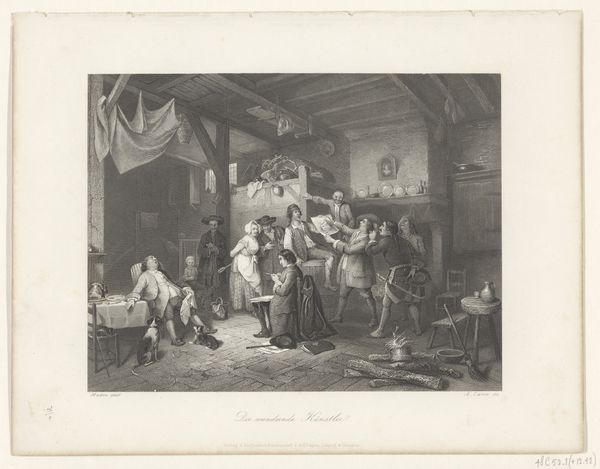
print, etching, drypoint, engraving
#
baroque
#
dutch-golden-age
# print
#
etching
#
figuration
#
history-painting
#
drypoint
#
engraving
#
realism
Dimensions: 10 15/16 x 15 5/16 in. (27.8 x 38.9 cm) (plate)
Copyright: Public Domain
Curator: Look at this print—it’s Rembrandt van Rijn’s "Christ with the Sick Around Him," made around the 17th century. It resides here at the Minneapolis Institute of Art. What are your initial impressions? Editor: The use of light is simply astonishing. Christ is positively radiant. But observe how the darkness gathers, framing him and creating pockets of intense shadow around the periphery, enhancing that ethereal glow. Curator: Rembrandt was indeed a master of light, which contributes to the dramatic tension that the scene elicits from the viewer. Consider the cultural context. Rembrandt, living in a tumultuous 17th century Netherlands, presents an image of hope, of divine intervention amidst worldly suffering. These were hard times and, certainly, seeing these works must have generated relief and spiritual hope for many. Editor: It is certainly true that the composition adds meaning. Yet, I am equally mesmerized by the intricate details captured through etching and drypoint—the textures of the clothing, the varied expressions on the faces. Look at that. Such command of technique elevates it from mere illustration to profound artistry. I like how he plays with contrasts, between smooth skin and deeply engraved wrinkles. Curator: The play of light and shadow underscores the social divisions prevalent in Rembrandt's time, does it not? He seems to say that suffering unites all social classes, all conditions. This print made copies more accessible to common people and gave a more humane perception of Christianism. It moved from a courtly controlled imagery to something popular. Editor: Perhaps. But might not his choices be driven more simply by artistic intent, by compositional considerations? The massing of figures to one side and then opened space on the other...see the use of open space, not as literal absence, but rather creating visual breaths that directs your eyes back toward that pivotal, shining figure of Christ? Curator: Those techniques allow Rembrandt to present us with social considerations. Note that it also became known as the “Hundred Guilder Print.” Its high price—because of the skilled labour that was put into it, not due to some mystical perception about its role, initially at least—speaks to the growing art market and his standing as a major artist at that time. Editor: All correct. Considering all that it encapsulates, the play of shadow and the luminous hope emanating from Christ’s figure makes a powerful statement, isn't it? Curator: It gives insight into Rembrandt’s world, an artistic, religious, and social document of 17th century Dutch society. Editor: And for me, an exemplar of what is achieved with form, light, and composition.
Comments
No comments
Be the first to comment and join the conversation on the ultimate creative platform.
